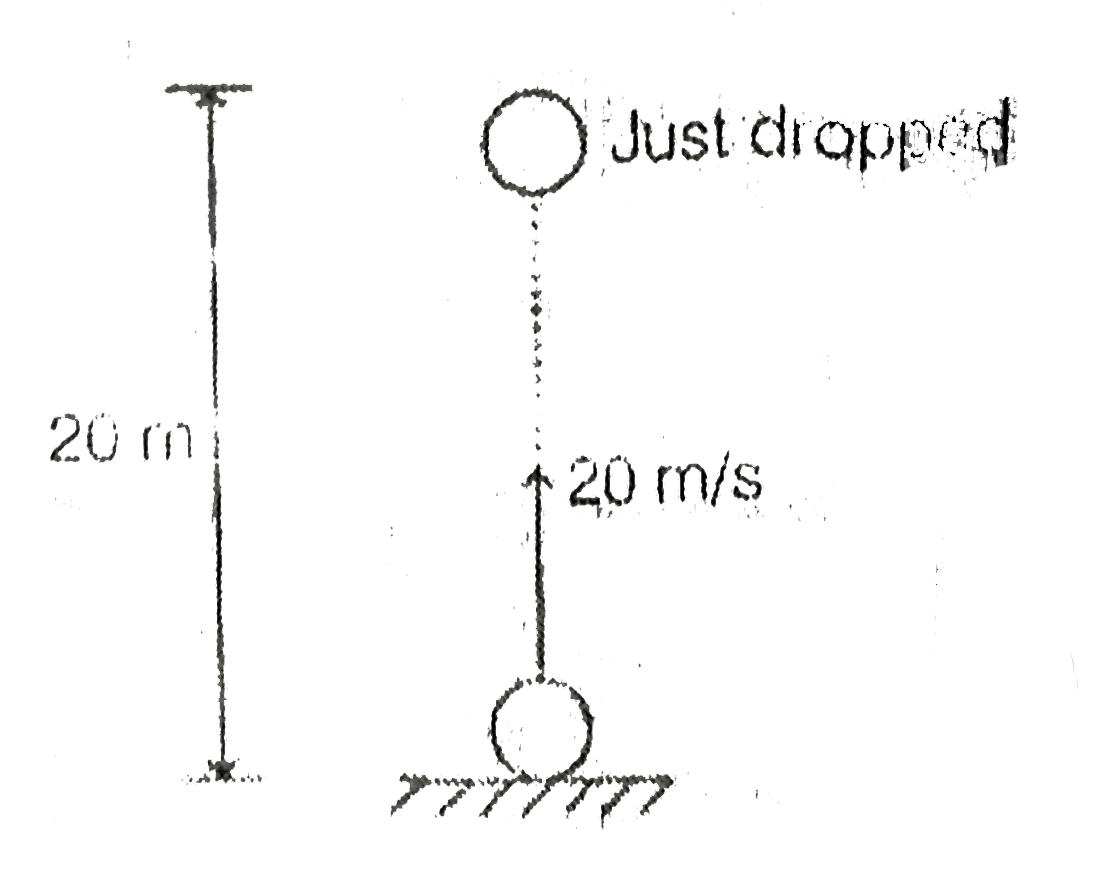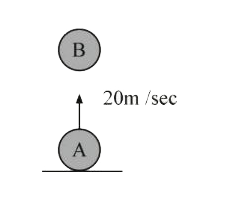Two identiacal masses are as shown in figure. One is thrown upwards with velocity 20 m/s and another is just dropped simultaneously.
The masses collide I air and stick together. After how much time the combined mass will fall to the gorund (calculate the time from the starting when the motion was started )

(1+√2)s
2√2s
(2+√2)s
None of the above
Step by step video & image solution for Two identiacal masses are as shown in figure. One is thrown upwards with velocity 20 m/s and another is just dropped simultaneously. The masses collide I air and stick together. After how much time the combined mass will fall to the gorund (calculate the time from the starting when the motion was started ) by Physics experts to help you in doubts & scoring excellent marks in Class 11 exams.
Updated on:21/07/2023Topper's Solved these Questions
- CENTRE OF MASS, IMPULSE AND MOMENTUMBOOK - DC PANDEYCHAPTER - CENTRE OF MASS, IMPULSE AND MOMENTUMEXERCISE - More a than one option is Correct
1 Videos
- CENTRE OF MASSBOOK - DC PANDEYCHAPTER - CENTRE OF MASSEXERCISE - Medical entrances gallery
27 Videos
- CENTRE OF MASS, LINEAR MOMENTUM AND COLLISIONBOOK - DC PANDEYCHAPTER - CENTRE OF MASS, LINEAR MOMENTUM AND COLLISIONEXERCISE - Level 2 Subjective
21 Videos
Similar Questions
Two identiacal masses are as shown in figure. One is thrown upwards with velocity 20 m/s and another is just dropped simultaneously.
In the above problem, to what maximum height (from ground) with the combined mass rise ?
View SolutionTwo identiacal masses are as shown in figure. One is thrown upwards with velocity 20 m/s and another is just dropped simultaneously.
If the collision between them is elastic, find the time interval between their striking with ground
View Solution
Knowledge Check
A mass of 20 kg moving with a speed of 10 m / s collides with another stationary mass of . 5kg As a result of the collision, the two masses stick together. The kinetic energy of the composite mass will be
A600 JouleB800 JouleC1000 JouleD1200 Joule
A sphere A is thrown up with velocity 20m/sec from the ground. Sphere B of same mass is dropped from a height of 80 m simultaneously, at time t = 0 so that both collide in air and stick together. Find the time (in second) after which the combined mass will fall on the ground. (Calculate from t = 0)(g=10m/sec2)

View SolutionA small ball A is.thrown up with a velocity 40ms from the ground. Another identical ball B of same mass is just dropped from a height of 50m simultaneously at time t=0 so that both collide in air and stick together. Find the value of t (in s) at which combined mass will fall to the ground. (g=10m(s)2)
'(##CEN_KSR_PHY_JEE_C08_E01_023_Q15##)'
View SolutionA balloon carring a stone is moving vartically upward with velocity 12m/s. When the balloon is at height 64m, the stone is dropped. After how much time and with what velocity will it strike the ground?
View SolutionA particle of mass 1 kg is projected upwards with velocity 60 m/s. Another particle of mass 2 kg is just dropped from a certain height. If, after 2 s, when neither of the particles have collided with ground, the value of the velocity of com (in m/s) is _____
View SolutionIn the example above, after how much time, particle comes to the starting point for the first time. (mass of particle = m)
View SolutionA ball of mass 3 kg is thrown upwards with velocity 20 m/s. After 1 s it explodes in 2 pieces one of mass 1 kg and other or 2 kg. After explosion both the pices maintain their vertical velocities but on ground they fall 90 m aport
Energy produced (in joule) during explosion is
View SolutionA ball is thrown vertically upward with velocity 20m/s from a tower of height 60 m. After how much time and with what velocity will it strike the ground?
View Solution
